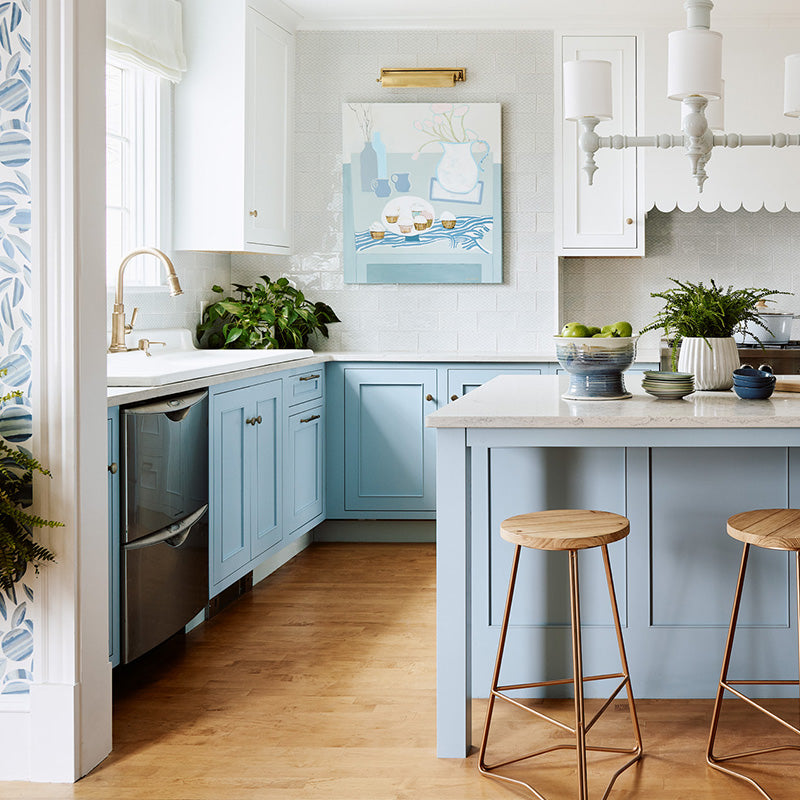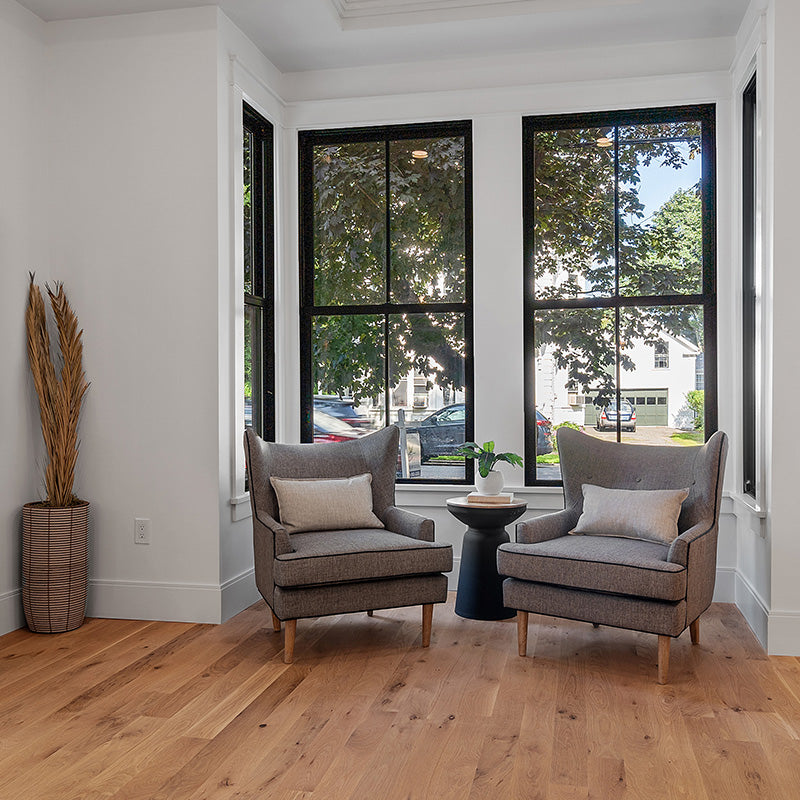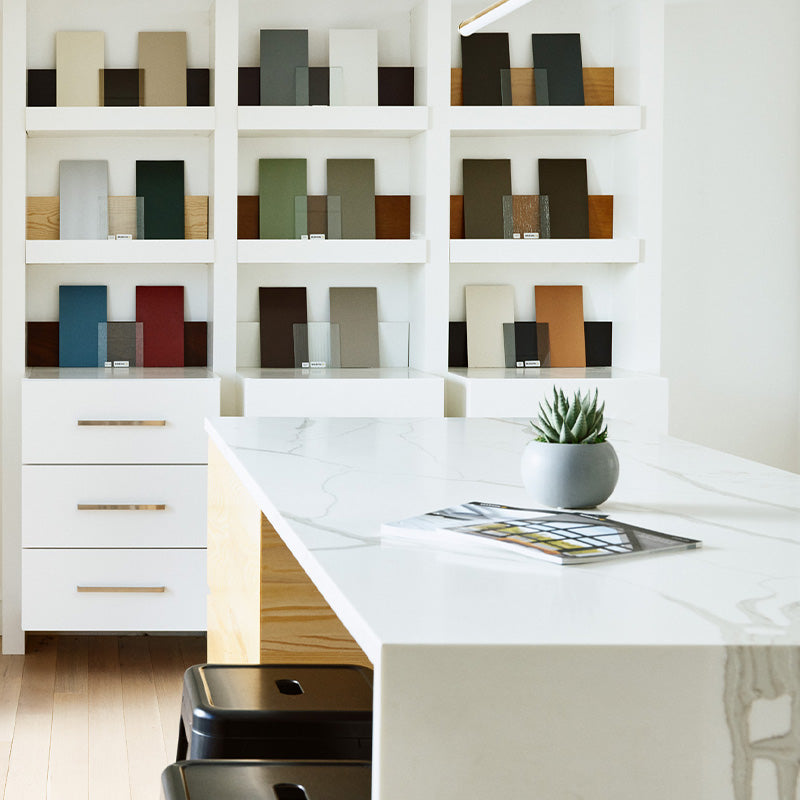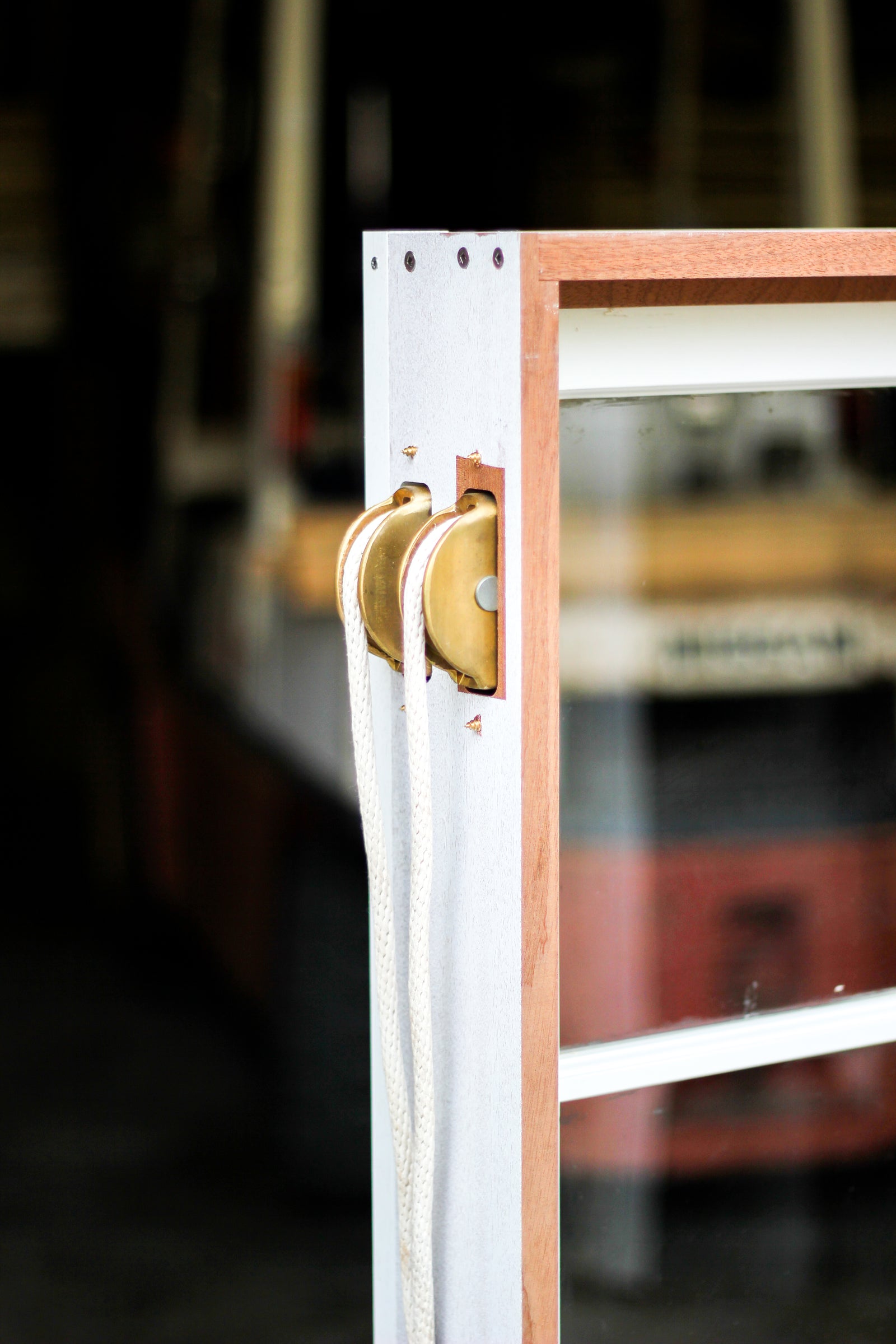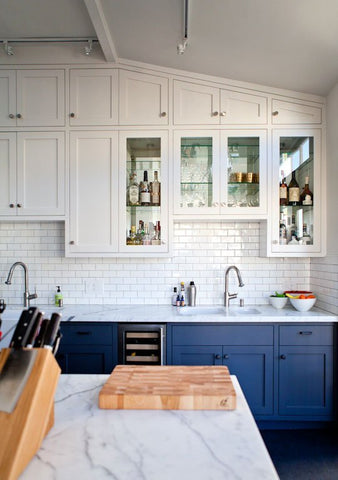Projects
Resources

Marble Countertops
September 29, 2015 4 min read
A long time classic in the kitchen, marble has a versatile look that can speak to all styles. Weather its about the luxury or the elegant style of a french kitchen, marble has something to say. It’s not all good news however and marble isn’t for everyone. It requires some maintenance, as it needs to be sealed and resealed over time. Marble also comes along with a living patina, growing with your home. You may be able to point out stains and etches that inspire the memory of a particularly good dinner party. While some enjoy reading their history in the countertop, it’s less than ideal for others.

What is marble?
Marble is a natural metamorphic stone found in mountainous regions of North America, South America, Asia, and Europe. It’s composed of calcium carbonate (the limestone family), meaning it is a softer stone and prone to marking. Acids react with the calcium carbonate, eating away at the surface. This creates dull spots, known as etches. Lemon juice, wine, and tomato sauce and most liquids can cause etching. However, marble doesn’t chip, dent or scratch. It is also heat resistant making it a durable option when properly cared for.
Color
This classic looks comes in a wide variety of colors. Marble can carry hues of white, black, gray, yellow, green, and pink with dark prominent veins others having more subtle patterns. The veining can offer a nice contrast to the straight lines kitchen tend to lend themselves to. Despite the variety of color white marble is often the first choice as a countertop. It goes well with almost anything and it can be dressed up or down. One great benefit of white marble is that etches are less visible, becoming part of the patina without creating an eyesore.

Finishes
Finishes can change the look and performance of a marble counter top. Here are some of the most common
Honed (Matte) Finish: By sanding the marble so that is has a satin-smooth, almost soft feel, a honed surface hides scratches and flaws more than a polished finish. It also mutes the color of the stone, which be either a benefit or disadvantage depending on the stone and your style. Honing the surface opens the pores of the marble, making it more susceptible to staining, it is crucial to seal the stone properly.
Polished Finish: A grinding and buffing process results in a glossy, slick surface, it is favored for bringing out the details of the marble’s color, veining, and character. Polished marble is the least porous of the finishes, but also the most susceptible to etchings.
Leather (Antique) Finish: Created by adding a leather-like texture to a honed surface, it has a soft sheen, but not as reflective as a polished finish. This finish is most commonly used with dark marbles. The texturing is an effective concealer of fingerprints and other imperfections. Note that the amount of texture created in the process varies from stone to stone.
Does marble need to be sealed?
Yes. Marble is a highly porous stone prone to acids. Sealing is necessary to preserve the stone. Even with sealant, the stone will still absorb stains over time, creating the patina. You can’t get the marble counter without the patina. There are two types of sealants:
Topical Sealant: This is a surface coating that covers the stone. It can slightly alter the look of the marble but provides some protection against acid etching. Topical sealants can scorch from heat and be rendered less effective by scratches.
Penetrating Sealant: Seeps into the pores of the marble and is the option most stone suppliers recommend for kitchen counters. Penetrating sealants soak into the pores of the stone. This helps to prevent other liquids from doing the same thing and creating stains. These add a small amount of water and stain resistance, however only enough to buy some time before spills need to be cleaned. Penetrating sealants do not make the surface water proof and offer no protection against etching.
Be advised: Sealants degrade over time and should be reapplied periodically. Some suggest once a year or more as needed. If water beads off the countertop, the sealant is still working; if it soaks into the stone, it’s time for another coat. Remember that each stone is different. Consult with the marble fabricator about the recommended sealant to ensure that it's non-toxic, food-safe, and the best sealer for your particular stone.
Cleaning & Maintenance
Marble requires more maintenance than other natural stones due to its porous nature. Your counters will be ever evolving, which isn’t a bad thing. Preventative maintenance is key. It’s important to wipe up spills as they happen, even if you do have a Penetrating Sealant, it’s an important habit to get into. Use a cutting board and be sure to reseal your counters as necessary. Stay away from abrasive cleaners, avoid using anything you wouldn’t use on your hands as a basic rule of thumb. Mild soaps and warm water with a non-abrasive sponge or cloth are best for day to day cleaning. For tougher spills, try a neutral stone cleaner. Serious stains may require a baking soda poultice to absorb the oils.
Shopping for Marble
Since each slab of marble is different from the next, shopping for marble can be a difficult and time consuming process. It’s important to do your homework in advance. Know what shade you are looking for and have an idea of how much patterning you want on your stone. Keep these ideas general, marble is a natural stone which cannot be ordered with exact colors and patterns. It can help to speak to a professional in advance and be sure to work closely with your contractor. Marble is purchased in finished slabs, know the specifications of your project and exactly what you need before you go.
| Pros | Cons |
| Natural material | Porous material susceptible to staining |
| Each piece is unique | Low abrasion resistance means scratching |
| Available in a range of colors and veining | Requires ongoing maintenance |
| Heat resistant | Etches if exposed to acidic liquids |
| A versatile & historic favorite in kitchens | Can be expensive |
| Develops a patina over time | Develops a patina over time |
Leave a comment
Comments will be approved before showing up.
Subscribe Today!
Our goal is to provide you with as much information as possible. Our newsletter is full of tips, inspiration and featured projects. We promise to only send you interesting things and never share your email with anyone else.

